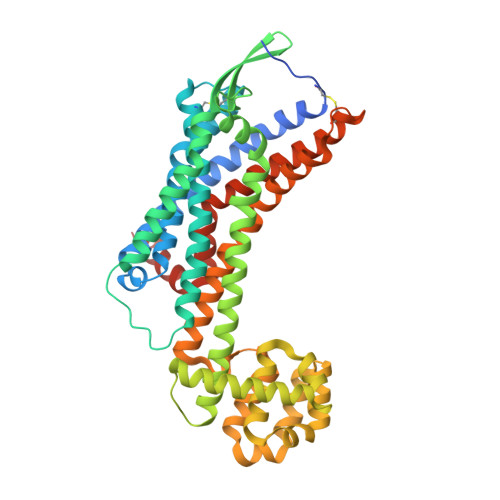X-ray structures of endothelin ETB receptor bound to clinical antagonist bosentan and its analog
Shihoya, W., Nishizawa, T., Yamashita, K., Inoue, A., Hirata, K., Kadji, F.M.N., Okuta, A., Tani, K., Aoki, J., Fujiyoshi, Y., Doi, T., Nureki, O.(2017) Nat Struct Mol Biol 24: 758-764
- PubMed: 28805809
- DOI: https://doi.org/10.1038/nsmb.3450
- Primary Citation of Related Structures:
5X93, 5XPR - PubMed Abstract:
Endothelin receptors (ETRs) have crucial roles in vascular control and are targets for drugs designed to treat circulatory-system diseases and cancer progression. The nonpeptide dual-ETR antagonist bosentan is the first oral drug approved to treat pulmonary arterial hypertension. Here we report crystal structures of human endothelin ET B receptor bound to bosentan and to the ET B -selective analog K-8794, at 3.6-Å and 2.2-Å resolution, respectively. The K-8794-bound structure reveals the detailed water-mediated hydrogen-bonding network at the transmembrane core, which could account for the weak negative allosteric modulation of ET B by Na + ions. The bosentan-bound structure reveals detailed interactions with ET B , which are probably conserved in the ET A receptor. A comparison of the two structures shows unexpected similarity between antagonist and agonist binding. Despite this similarity, bosentan sterically prevents the inward movement of transmembrane helix 6 (TM6), and thus exerts its antagonistic activity. These structural insights will facilitate the rational design of new ETR-targeting drugs.
Organizational Affiliation:
Department of Basic Medicinal Sciences, Graduate School of Pharmaceutical Sciences, Nagoya University, Nagoya, Japan.


















